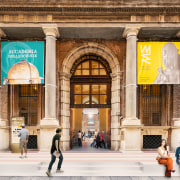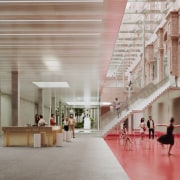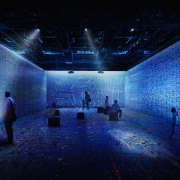Unwrapping the charms of Egypt
Museo Egizio, the museum for Ancient Egyptian culture in Turin, is re-envisioned by OMA – a dramatic covered courtyard stands at its heart
Design by OMA
The Museo Egizio in Turin, the world’s oldest museum for Ancient Egyptian culture is being transformed – the competition to design the transformation was won by architects OMA.
The design creates a new covered courtyard known as Piazza Egizia and a series of connected urban rooms within the existing museum, opening the cultural space to all.
Founded in 1824, Museo Egizio is housed in Collegio dei Nobili – a complex consisting of exhibition galleries, the Academy of Sciences, and an open courtyard.
Changing requirements over the past two centuries have led to numerous alterations to the museum’s architecture, closing the public areas off to the rest of the city.
OMA managing partner, architect David Gianotten says that Museo Egizio, with its open courtyard, is historically a main civic space in Turin.
"Our team believes that it is vital to restore the public nature of the museum and integrate it back with Turin’s network of public spaces.
By reorganising the current museum’s public areas, we have created the Piazza Egizia, which is a place for all kinds of activities shared between Museo Egizio and the city,” says Gianotten.
The design is defined by six distinctive urban rooms, each with its unique scale, function, and quality.
The largest urban room central to the museum is the Piazza Egizia.
A central spine connects the six urban rooms together, and also to both of the museum’s entrances on Via Accademia and Via Duse.
New openings have been introduced to the current façade along Via Duse, further drawing the public into the museum and the Piazza Egizia.
The six urban rooms share a ground floor pattern – inspired by the museum’s artefacts – for visual continuity.
The Piazza Egizia is a double-level, multifunctional courtyard that showcases the museum’s original architecture and traces of interventions over time.
The multiple historic openings of the courtyard at level 0 – which had been closed due to the museum’s alterations – are once again opened, connecting the public space back to the city.
At level 1 are the Egyptian Garden and the event and learning space.
Here, Collegio dei Nobili’s original façade, concealed since the 2010 renovation, is uncovered.
Above the courtyard is a transparent canopy.
Its aluminium cladded steel structural grid is a device for rainwater collection, air ventilation, and lighting provision, answering the museum’s ambitions for sustainability.
OMA project architect Andreas Karavanas says the design conceptualises Piazza Egizia as a palimpsest that reveals the different layers of the museum’s history.
"This approach restores coherence to the architecture and lends the museum a lucid identity, while ensuring that the institution’s new needs are fulfilled,” he says.
The Piazza Egizia and other urban rooms are open beyond working hours for visitors with or without tickets.
Their public nature offers possibilities for the museum to extend its opening hours.
A selection of Museo Egizio’s artefacts is on display for the general public’s initial encounters with the museum collection.
The competition design was led by OMA’s David Gianotten and Andreas Karavanas, in collaboration with local architects Andrea Tabocchini Architecture, T-Studio, and historical consultant Professor Andrea Longhi.
OMA’s design was selected among competition entries by Kengo Kuma and Associates, Pininfarina Architecture, Carlo Ratti Associati, and Snøhetta.
Credit list
Project
Lead architect
Local architect
Visualisation
Structural engineer
Lighting
Owner
Partner
Historical consultant
Conservation and restoration
MEO and sustainability
Designed by: OMA
Story by: Egizio Piazza
Home kitchen bathroom commercial design
Diving into nature
Classic looks, contemporary efficiency
Personality plus















